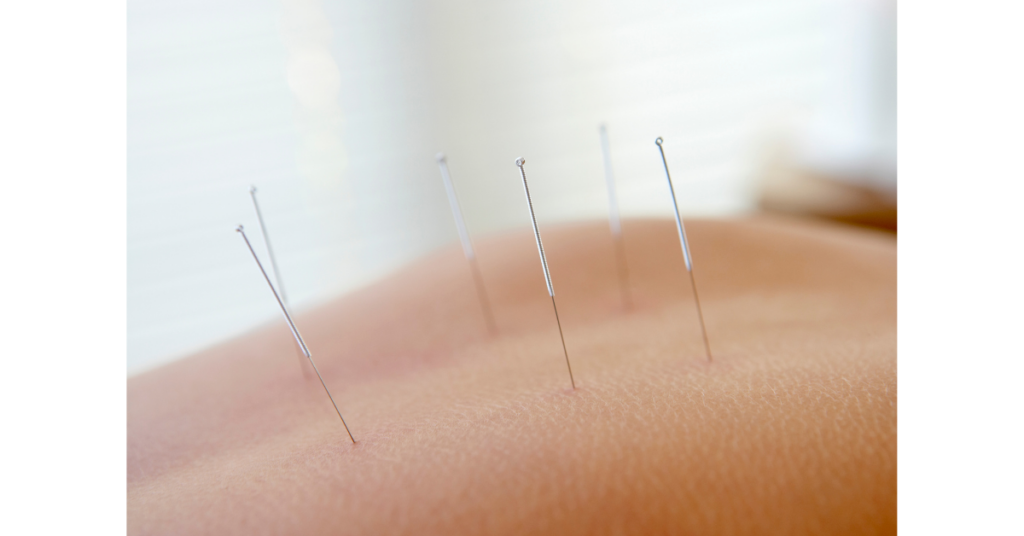Acupuncture
Energy runs along pathways, known as meridians, around the body, and it is believed that the insertion of very fine needles along certain points, or acupoints, along these pathways can assist the body to heal and bring about balance.
This article provides general information of what to expect when you visit a therapist, and a general theory behind how the discipline works. It must be noted, however, that every therapist works in an individual way, and may subscribe to slightly different theories on how the discipline works. It is always advised that you ask to see relevant qualifications and discuss the treatment offered to you by the practitioner if you are in any doubt whatsoever.
What is Acupuncture?
Ill health, according to an acupuncturist, is due to an imbalance or impedance of vital energy, called qi, around the body. By applying pressure or inserting needles in the surface of the body there is a direct influence on internal conditions.
Practitioners believe that there are 35 energy channels in total, with the main 12 being connected to the lungs, stomach, kidneys, small intestine, bladder, heart, pericardium, large intestine, spleen, gall bladder, liver, and the ‘triple burner’.
Acupuncture is a healthcare approach that comes within the remit of Traditional Chinese Medicine (TCM) and works according to the concept of yin and yang; hence six of the regular meridians are primarily yin (associated with ‘solid’ organs such as the liver) and six are yang associated with the ‘hollow’ organs such as the stomach.
Main uses
Pain relief, anaesthesia, arthritis, or other musculoskeletal conditions; addictions; migraines; depression, anxiety; asthma and hay fever; high blood pressure; digestive disorders; prevention.
What to expect when you visit a therapist?
You will be asked questions relating to your medical history and perhaps that of your immediate family. Lifestyle questions, such as stress levels, diet, exercise regimes, and sleep patterns will be asked to ensure that an holistic approach is taken as well as asking you, the patient, what expectations you have of the treatment.
Your condition will be assessed using the method of asking, observing, listening and smelling and touching and your ‘pulse’ will be taken. This is not like taking the pulse as we know it in Western medicine, it is far more complex than that as the therapist is actually checking the rhythm and strength of all the 12 meridian pulses.
You will more often than not be given advice on diet and lifestyle and perhaps a treatment of herbs. You will be asked to lie on a couch, and you may need to remove some items of clothing depending on which acupoints the practitioner needs to access.
Several points may be used at any one time, with hands and feet often treated.
There is no risk of contamination from the needles as the practitioner will either sterilise needles in an autoclave or use disposable ones.
The needles are very fine and, for that reason, it is not like having an injection where a much thicker needle is used. Some people don’t even feel the needles going in or out.
The needles are left in for a few seconds or even up to an hour with between 6 and 12 needles in use at any one time.
Acupuncturists also treat some conditions with moxibustion, which is where a herb ‘moxa’ is burnt to stimulate certain acupoints (it never burns the skin) or cupping where glass cups are placed over acupoints in order to draw energy (qi) and blood towards them.
A session can last anywhere from 30 minutes to 90 minutes depending on how long the needles need to be left in; your first session will usually be the longest. You will need between 12 and 30 sessions depending on your condition, but you should certainly begin to see results after the first 5 sessions.
History (In Brief)
Acupuncture has been practised in China for around 3,500 years, but it wasn’t until the 17th century that it was brought to Europe via the missionaries. In 1971, James Reston, a New York journalist, wrote about its benefits when, on a visit to China, he had to have emergency surgery and needed pain relief after the operation, for which he was given acupuncture.
Then in the 1970’s when China opened up, many Western doctors studied acupuncture techniques, and the practice filtered through into pain clinics and some hospitals.
Its use within the NHS is growing, and there are now many practitioners in the UK.
Acupuncture is claimed to be effective for:
Stress relief
Headaches
Migraines
Neck pain
Shoulder pain
General aches and pains
Menstrual problems (see also Dysmenorrhea and Menorrhagia)
Anxiety
Nausea
Allergies
Insomnia
Chronic conditions
Eye strain
Back strain
PMS
Salt imbalances
Fatigue / Tiredness (see also Myalgic encephalomyelitis (ME) / Chronic Fatigue Syndrome (CFS))

